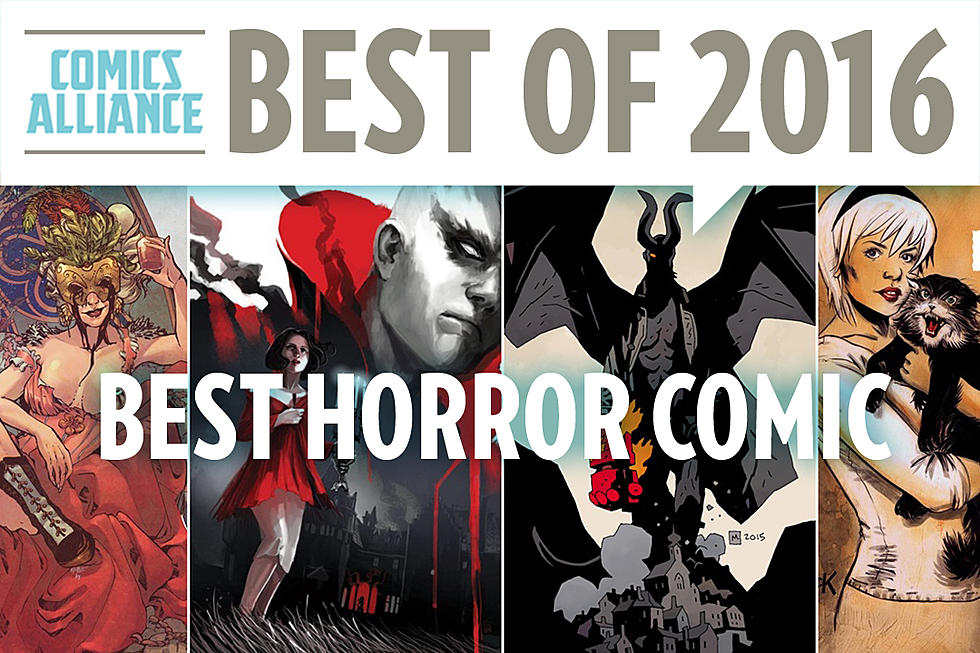![‘Baltimore: The Plague Ships’ #1: Vampire Zeppelins on Fire Over France [Review]](http://townsquare.media/site/622/files/2010/08/zeppelin-explodes.jpg?w=980&q=75)
‘Baltimore: The Plague Ships’ #1: Vampire Zeppelins on Fire Over France [Review]

The First World War was often referred to, during the time of the war and its immediate aftermath, as "The Great War." Obviously it didn't take on the title of World War I until there was also a World War II. As an interesting side note, this is nearly the exact opposite of how naming conventions became applied to the Star Wars films, as it did not become necessary to refer to New Hope through Return of the Jedi as "The Good Films" until the prequels came out.
At any rate, given that about fifteen million people died during that terrible conflict (again, by this I'm referring to World War I and not the Star Wars prequels) I can only assume that calling it "The Great War" came about as a result of sarcasm being an exceedingly popular thing to use when naming global conflicts during the early decades of the 20th century. But upon reading the first issue of Dark Horse's "Baltimore: The Plague Ships," the new series by Mike Mignola and Christopher Golden based on the pair's earlier illustrated novel, I may have been incorrect. Because if this comic is accurate and World War I actually did involve exploding zeppelins full of German vampires, I'd say great is a fair adjective to employ.Mignola and Golden revisit the setting they'd originally created in "Baltimore, or, The Steadfast Tin Soldier and the Vampire" now as a comic with art by Ben Stenbeck and colors by Dave Stewart. As far as I can tell this is a new story, although I haven't read the original work and could be mistaken. But you don't need to worry about being familiar with the original work either, as the comic works well as an introduction to the character of Lord Henry Baltimore, a physically and spiritually scarred World War I veteran who hunts monsters. The work takes place in a supernatural alternate history in which a terrible plague prematurely ended the war, and is now still causing serious casualties half a year later.

Baltimore comes to a town in France on the trail of one specific old and dangerous vampire who may have played a part in the spreading of the plague. And while he puts an end to several vampires in a fight scene beautifully rendered by Stenbeck and Stewart, that doesn't stop the local population from approaching Baltimore with suspicion and paranoia. His only help comes from an attractive local girl who sees him as a chance to get out of the town and the girl's much less attractive fortune-telling grandmother, who's eager to see Baltimore leave but not so eager to have him take her granddaughter with him. Given that comics are an inherently visual medium, you can probably make an accurate guess about whether the attractive female character goes with Baltimore or not.
I really enjoyed this book as a first experience with both a character and a setting that immediately drew me in. The tone of the writing perfectly matches the tone of the artwork and the two combine to create an instant impression of who Lord Henry Baltimore is, why the world he lives in has turned him into such a grim man, and how remarkable it is that he can still be so determined to carry out his hunt. The only thing missing here is that despite the fact that Baltimore has a wooden leg, at no point does he jump kick a vampire and impale it through the heart. But I guess Mignola and Golden have to save something for issue 2.
More From ComicsAlliance
![Mike Mignola’s ‘Hellboy’ Extended Unvierse Continues To Expand In June Solicitations [Exclusive]](http://townsquare.media/site/622/files/2017/03/Hellboy-Solicit.png?w=980&q=75)
![The Best Dark Horse Comics Covers of 2016 [Gallery]](http://townsquare.media/site/622/files/2017/01/featured.png?w=980&q=75)
![A Zombie Gangster Is On The Prowl In ‘Lobster Johnson: Garden Of Bones’ [Exclusive Preview]](http://townsquare.media/site/622/files/2017/01/LJOHNGB-PG-00.jpg?w=980&q=75)




![Hellboy Is Ocean Bound As He Sails ‘Into The Silent Sea’ [Preview]](http://townsquare.media/site/622/files/2016/10/hb_featured.jpg?w=980&q=75)
![Exquisite ‘Corpse': Why The Best ‘Hellboy’ Short Story Is A Perfect Comic Book [Fantasy Week]](http://townsquare.media/site/622/files/2016/10/Corpse01.jpg?w=980&q=75)
